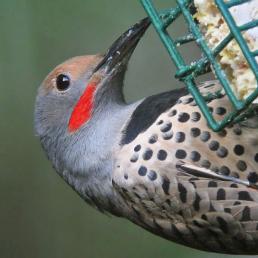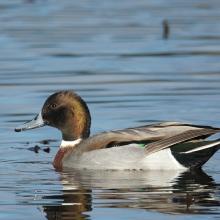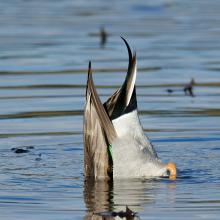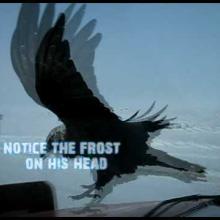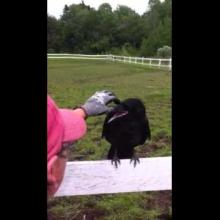

Join BirdNote tomorrow, November 30th!
Illustrator David Sibley and actor H. Jon Benjamin will face off in the bird illustration battle of the century during BirdNote's Year-end Celebration and Auction!
Feathers are amazing structures. But after about a year, constant use and exposure to the elements mean they have to be replaced. So how do you replace the roughly 20 feathers in each wing that are essential to flight? Many species — such as this Common Raven — molt just a few feathers at a time so they can still fly. But waterbirds like ducks and loons molt all of their flight feathers at once. As a result, they’re earthbound and vulnerable to predators for a month or more — until their full suite of feathers has been completely restored.
BirdNote®
Flying and Molting, a Tricky Balance
Written by Bob Sundstrom
This is BirdNote.
[Common Raven call]
Feathers are miraculous structures. Especially the long, strong feathers of a bird’s wings and tail that make flight itself possible.
[Raven wings flapping]
But after about a year, constant use and exposure to the elements mean they have to be replaced. So how do you replace the roughly 20 feathers in each wing that are essential to flight, without becoming earthbound?
[Music]
Many birds molt a few flight feathers at a time, wait until new ones grow in, molt another few, and so on. Usually the same feathers on each wing at the same time, symmetrically. So in summer, a raven that’s molting might look a little ragged in the same part of each wing.
For ravens, a molt can take up to six months. For smaller birds, closer to two. But — crucially — they can still fly.
Waterbirds like ducks and loons, though, are too heavy to fly with even a few feathers missing. So they molt all their flight feathers at once, becoming earthbound and especially vulnerable to predators for a month or more. During this time they stay in or very close to the water and out of harm’s way. Until their full suite of feathers has been completely restored.
[Common Raven call]
For BirdNote, I’m Michael Stein.
###
Bird sounds provided by The Macaulay Library of Natural Sounds at the Cornell Lab of Ornithology, Ithaca, New York.
Common Raven ML137574 recorded by Gerrit Vyn
Common Raven ML132203 recorded by Mike Andersen
‘Sonata I’ by John Cage performed by Maro Ajemian from ‘Sonatas and Interludes for Prepared Piano’ - El Records
BirdNote’s theme music was composed and played by Nancy Rumbel and John Kessler.
Producer: John Kessler
Executive Producer: Dominic Black
© 2015 Tune In to Nature.org August 2017 / 2021 Narrator: Michael Stein
ID #: molt-03-2015-08-10molt-03
